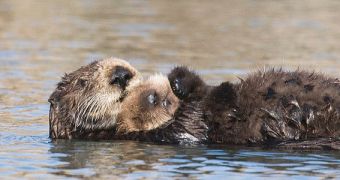For the first time ever, researchers at the United States Geological Survey (USGS) and the US Centers for Disease Control and Prevention (CDC) have demonstrated that the same flu virus that infects humans can also be transmitted to sea otters. During a study conducted in 2011, experts found evidence of the H1N1 virus in Northern sea otters off the coast of Washington state.
This is the same strain of swine-origin H1N1 that forced the UN World Health Organization (WHO) to declare a global pandemic in June 2009. The swine flu, which originated in the state of Veracruz, in Mexico, and ended in August 2010, claimed the lives of 18,000 people. WHO Director General Margaret Chan says the death toll is probably much higher, when considering unreported deaths.
The fact that the flu is able to jump from species to species has been documented in the past, for birds and swine, but never for marine creatures such as sea otters. The discovery was made during a joint USGS/CDC health monitoring project carried out off the coasts of Washington state in August 2011.
Though researchers were unable to figure out the exact source of exposure for these creatures, the fact remains that they somehow got infected and that the virus found welcoming hosts. “Our study shows that sea otters may be a newly identified animal host of influenza viruses,” explains researcher Hon Ip. He holds an appointment with the USGS and was a coauthor of the new paper.
Details of the work will be published in the May issue of the scientific journal Emerging Infectious Diseases, but the paper is already available online. Experts with the USGS National Wildlife Health Center, the USGS Alaska Science Center, the USGS Western Ecological Research Center, the Monterey Bay Aquarium, and the Seattle Aquarium were also involved in the research.
According to the paper, scientists discovered antibodies associated with the H1N1 virus in nearly 70 percent of all sea otters they studied. Interestingly, none of the animals displayed symptoms at the time of the study, suggesting that they may have been affected between 2009 and 2010, like humans were.
Subsequent genetic analyses of the viral genetic material revealed that the biomarkers were specific to the 2009 variant of the H1N1 virus, not other human or avian strains of the same pathogen. “We are unsure how these animals became infected,This population of sea otters lives in a relatively remote environment and rarely comes into contact with humans,” says CDC expert and lead author Zhunan Li.
“Our new study identifies sea otters as another marine mammal species that is susceptible to influenza viruses and highlights the complex interspecies transmission of flu viruses in the marine environment,” concludes LeAnn White, a scientist with the USGS.

 14 DAY TRIAL //
14 DAY TRIAL //